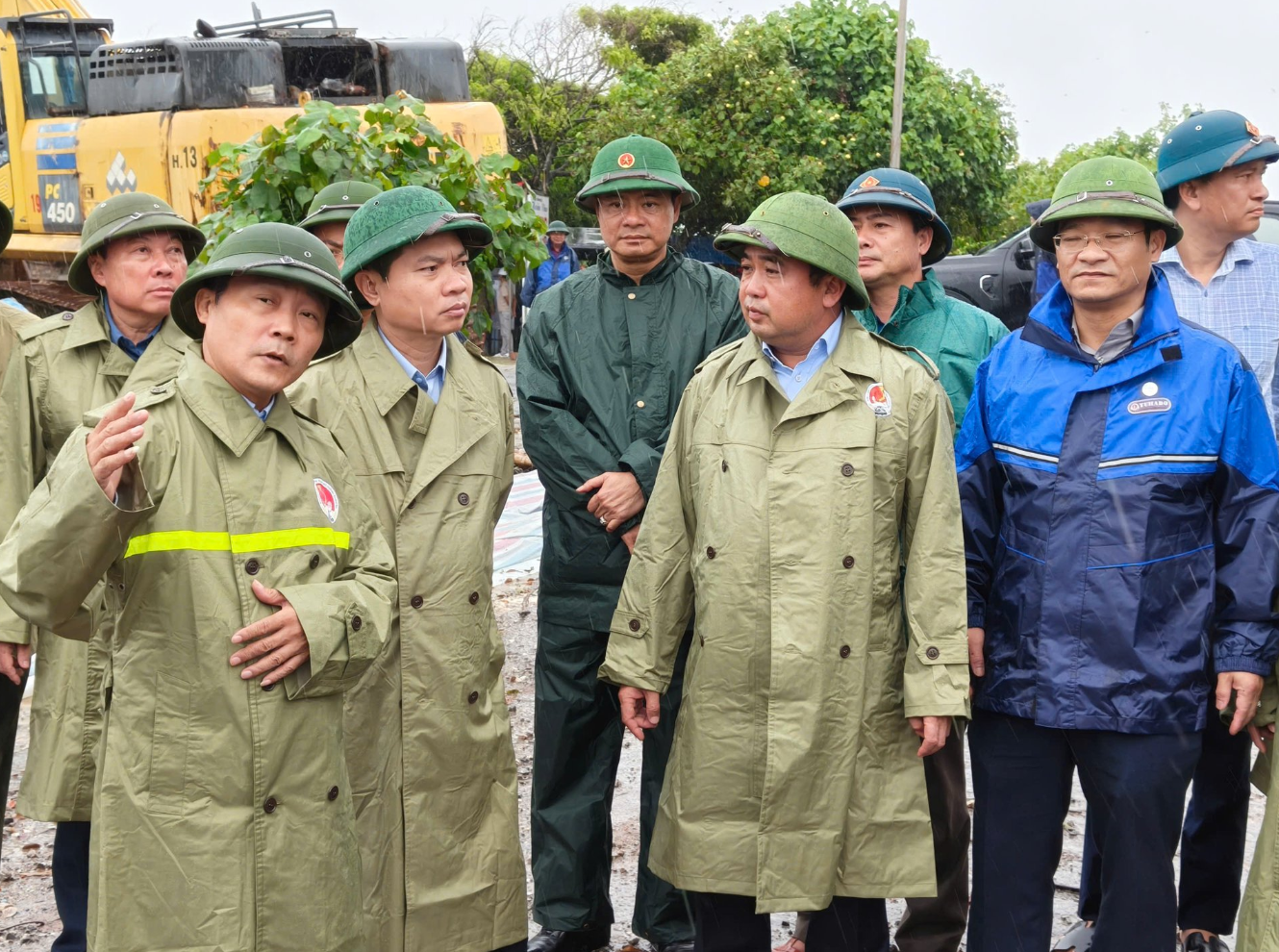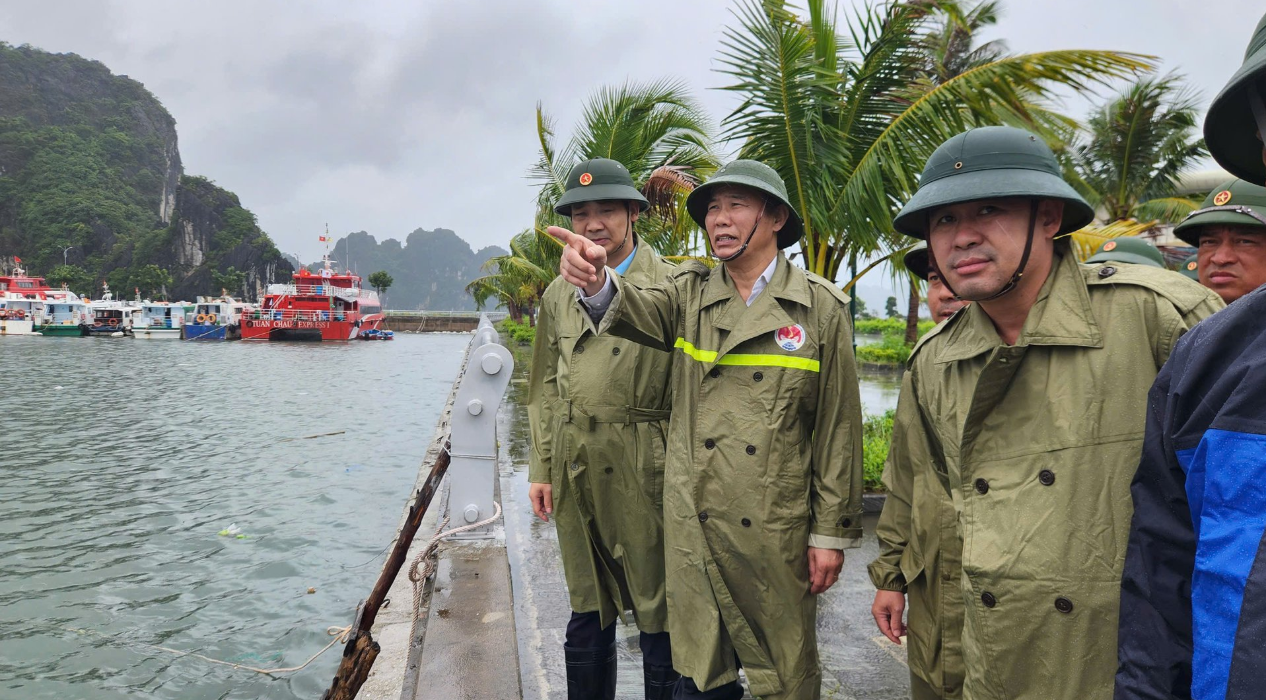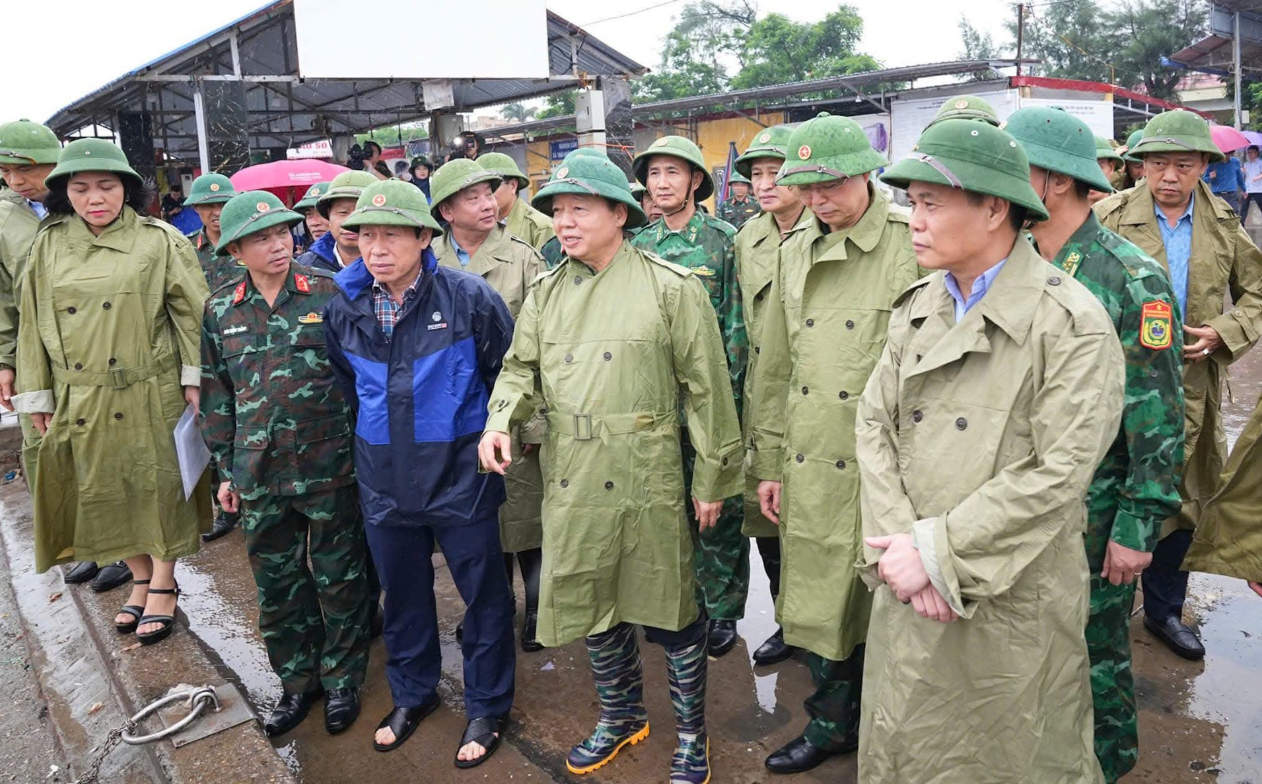As Typhoon Wipha (Typhoon No. 3) continues to intensify in the Gulf of Tonkin, senior officials from the Vietnamese Government and the Ministry of Agriculture and Environment have directly engaged with local authorities to coordinate emergency preparedness and response efforts, prioritizing the safety of people and property.
By early afternoon on July 21, strong winds from the storm had reached level 8, gusting to level 9 in Bach Long Vi; Co To recorded winds at level 6, gusting to level 7. As of 3:00 p.m. the same day, the storm's center was approximately 110 km from Quang Ninh, 230 km from Hai Phong, and 250 km from Hung Yen to the east.
To strengthen efforts to mitigate Typhoon Wipha's effects, Government and Ministry of Agriculture and Environment leaders and multiple working delegations are working directly with local authorities to coordinate response.
Support for vulnerable groups
During his visit and on-site inspection in Ninh Binh province, Acting Minister of Agriculture and Environment Tran Duc Thang praised the province’s proactive approach to typhoon preparedness. He also called on local authorities to pay special attention to vulnerable groups, including the elderly and children, and to develop concrete plans to evacuate households living in structurally unsafe homes.
 Acting Minister of Agriculture and Environment Tran Duc Thang (front row, second from right) oversees Typhoon No. 3 preparedness efforts in Ninh Binh on the afternoon of July 21.
Acting Minister of Agriculture and Environment Tran Duc Thang (front row, second from right) oversees Typhoon No. 3 preparedness efforts in Ninh Binh on the afternoon of July 21.The leader of the Ministry of Agriculture and Environment also emphasized that fishing port management authorities must strictly prohibit all fishing vessels from heading out to sea during the period affected by the storm's circulation.
On-site inspections and decisive measures
Deputy Minister of Agriculture and Environment Phung Duc Tien conducted a field inspection in Quang Ninh, one of the provinces expected to be directly impacted by the storm. During a working session with provincial leaders, the Deputy Minister emphasized the need for absolute vigilance. He instructed localities to fully implement the "four-on-the-spot" principle (local command, forces, logistics, and resources), closely monitor storm developments, and proactively evacuate residents from high-risk areas.
 Deputy Minister of Agriculture and Environment Phung Duc Tien (front row, second from left) inspects storm preparedness efforts in Quang Ninh province.
Deputy Minister of Agriculture and Environment Phung Duc Tien (front row, second from left) inspects storm preparedness efforts in Quang Ninh province.Quang Ninh authorities reported completing checks on over 4,000 vessels and more than 10,000 crew members. The province has also announced 76 safe anchorage points and mobilized Border Guards, fisheries surveillance, militia, and rapid response teams for emergency deployment.
Deputy Minister Tien also stressed the importance of securing aquaculture zones, reservoirs, dyke systems, and communications infrastructure. He called on telecom providers to activate contingency plans to ensure uninterrupted communications for central and local coordination.
From reactive to proactive storm management
Earlier that morning, Deputy Prime Minister Tran Hong Ha led an inspection in Hai Phong to review storm preparedness. He praised the city's prompt actions but urged stronger post-storm evaluations to improve response strategies and ensure decisive implementation.
 Deputy Prime Minister Tran Hong Ha (front row, wearing boots) inspects Typhoon No. 3 preparedness efforts at Ngoc Hai Fishing Port in Do Son Ward.
Deputy Prime Minister Tran Hong Ha (front row, wearing boots) inspects Typhoon No. 3 preparedness efforts at Ngoc Hai Fishing Port in Do Son Ward.The Deputy Prime Minister instructed a comprehensive review of the dyke system, especially vulnerable sections, and warned against complacency regarding landslide risks. He also called for stringent oversight of unfinished major infrastructure projects, identifying them as particularly vulnerable to storm damage.
Regarding aquaculture facilities, the Deputy Prime Minister emphasized the need to evacuate residents from hazardous zones while safeguarding their property. He directed armed forces to assist in reinforcing aquaculture cages and rafts.
Strengthening resources at vulnerable points
While inspecting the Ngoc Hai fishing port area in Do Son Ward, Deputy Prime Minister Ha highlighted challenges arising from recent administrative restructuring, where one commune now oversees a larger jurisdiction. He stressed the need to concentrate supplies, materials, and personnel in vulnerable areas and to establish rapid response mechanisms across communes.
"Each commune has a rapid response team, but when another commune is in trouble, all surrounding communes must immediately provide support," he stated.
The Government's overarching directive remains clear: act swiftly and proactively without panic or complacency to minimize damage from the incoming storm.